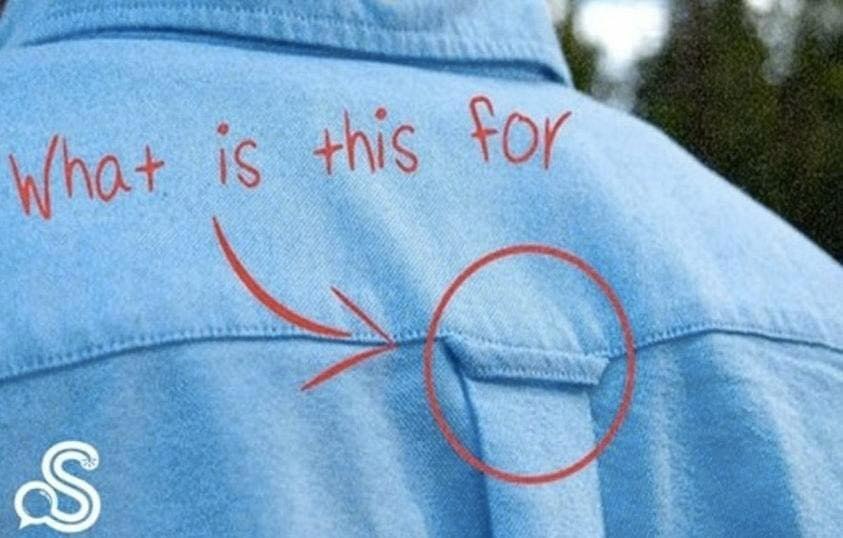Historical Roots and Practical Origins The loop’s origin is often linked to American sailors who used it to hang their shirts while aboard ships. Eventually, it became a standard feature in “preppy” gear worn by college students in the 1960s.
Gant’s Ivy League Connection According to clothing manufacturer Gant, the button-down shirt, featuring the loop, originated on Ivy League campuses, particularly gaining popularity among male students in the 1960s. The design began with a Yale search for male trainees, eventually spreading nationwide.
Casual Style with Dress Shirts: Dress shirts for men often boast a discreet loop at the back, primarily worn casually with buttons down, contributing to a laid-back yet refined aesthetic.
Versatile Styling and Gym Convenience: This unassuming loop, when paired with suitable jeans and accessories, has the transformative ability to turn a shirt into a sophisticated piece. For fitness enthusiasts, it serves the practical purpose of easily removing and hanging the shirt without the need for a closet.
Relationship Status Indicator: Beyond its practical uses, the loop can serve as a subtle indicator of a person’s relationship status. The act of removing the loop may signify a committed relationship, offering a discreet yet effective way to communicate one’s romantic involvement without explicitly stating it.
Evolution of the Loop’s Meaning: Originally functional, the shirt loop has undergone a transformation, becoming an additional piece of material sewn into garments. In the modern context, its original meaning may have evolved, but its presence still holds significance.
The Timeless Appeal of Men’s Shirt Loops
Continue Reading in next page

